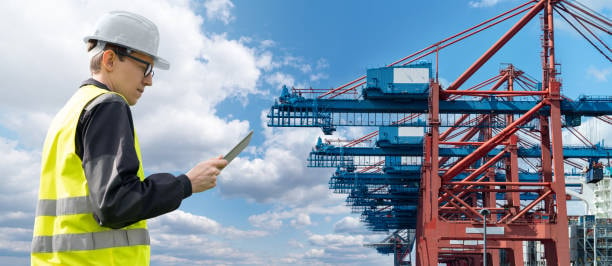
Meta Description: Everything you need to know about terminal handling fees (THF) and origin thc terminal handling charges thc in shipping including what they entail at port premises , how they are computed and ways of reducing the costs. The perfect importers and exporters guide in 2025.
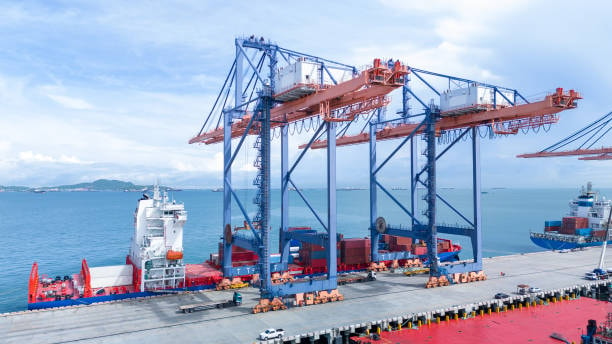
One of the most important, but yet ambiguous costs related to international shipping are the terminal handling fees. One of them being shipping line and terminal operator fees that could severely affect your bottom line unless managed in a suitable manner. Learning about handling methods and terminal handling charges is the key aspect in any business involved in the shipping industry and international trade either you export containers across seas or a complex supply chains.
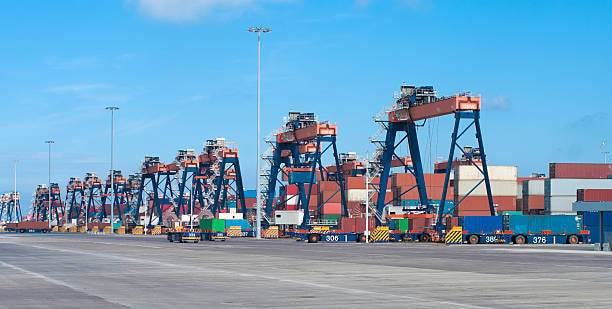
Complexity in the nature of terminal handling allergies lies in its variable application on handling methods involved various ports, shipping line or type of goods. Many services and operating expenses that are often required to facilitate the proper operations of contemporary container terminals may well be hidden within what appears to be a simple charge. Any given company that is interested in bringing down its logistic costs will find it useful to have an in-depth understanding of these costs incurred; they do not only find it useful but critical in ensuring that it has sustainable operations and prices to keep itself competitive.
What is a Terminal Handling Fee?

A terminal handling fee (THF) is an amount levied by the shipping lines or terminal operators which is to cover the incurred expenses of handling containers in the port terminals. This charge includes different loading and unloading operations planned to transfer containers between vessels, trucks, and storage spots of the terminal facility using advanced equipment . The THF is strategized to retrieve contacts associated with terminal infrastructural, equipment maintenance equipment usage, workforce, and administrative duties that allow smooth passage of freight within the portscapes.

The tariff is very different according to the particular port, the shipping company and the nature of cargo being transacted. At some terminals some handling services are contained in standard rates and in others each component is itemised. Knowledge of the services that are covered by the THF and the origin terminal handling charges can assist the importers and exporters to adjust their budget more realistically and anticipate possible reduction places at destination ports . Clarity has improved on these charges during the past years but the inconsistency of naming and cost structure in various regions may still cause confusion to shippers.
Components Covered by Terminal Handling Fees
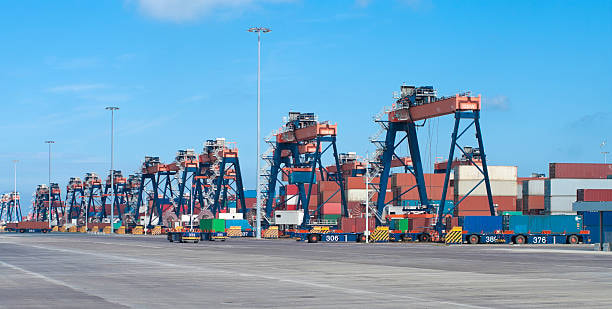
Terminals processing charges usually involve a great variety of charges and services that are necessary to the transportation of containers in the ports. Such elements entail the ability of safe storage and container movements to be lifted up by specialized cranes and machines to transfer containers in between vessels, trucks, and freight terminals. Storage fees are also charged on containers waiting to either be picked or loaded but the storage fee is only charged when they exceed the free time which is generally charged in longer periods.
The other important element of terminal handling fees is administrative services, which refers to documentation processing, interface systems in customs and cargo tracking. The international regulations that require security measures to be put in place by terminal authorities also relate to this in terms of charges, i.e., scanning of containers as well as an access control system to manage cargo traffic . The cost of use of equipment such as depreciation costs, and maintenance of the infrastructure of terminals particularly cranes, reach stackers, and automated handling systems, are also important operational costs that are recuperated by terminals on the basis of handling charges.
Types of Terminal Handling Charges
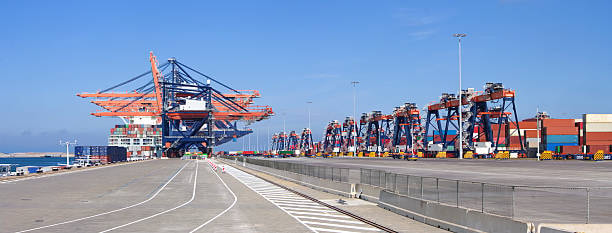
Import terminal handling charges are imposed on the containers which already left the vessel and are ready to be picked by consignees or their representatives. Such fees include all the unloading process, shipment transaction storage in the terminal as part of the container handling services , and preparation to load into the trucks and rails to reach their final destinations. Basic services are provided with the rate of exporting THF charges which normally contains a certain period of free time for a full container load before the additional charges of let out charges. The sophistication of the import processes, such as the customs clearance process and inspection procedure, may also affect the total cost pattern.
Export terminal handling fees are addressed to the containers presented to the terminal and loaded into the outbound vessels. Such charges include levying of containers off trucks or rails, short-term storage, custom clearance and loading activities. Depending on the type of cargo and reefer containers specifications, the cost of export may differ as well as scheduling requirements. Others may have expedited services available at the terminals, although these are normally high priced, with an increased level of service and priority treatment.
Factors Affecting Terminal Handling Fee Rates
Terminal handling fees are greatly affected by the size and type of container because bigger containers need special equipment and procedures that have to be followed. The rate structures of standard dry containers are often fixed whereas reefer containers, open-horse containers and oversized cargo will be at higher rates since specialized equipment handling will be required. The rate is also influenced by the total container cost weight of the cargo being transported because heavier containers need stronger equipment and might not be allowed to stack and store them in certain locations.
The location of ports and the economic aspects of the region are determinants that are influential in the structure of the fees. Larger high volume and efficient ports might provide competitive rates because of economy of scale whereas small or far flung ports may be inclined to price high to recover fixed costs of their operations. Currency risk, local labor rates, and local regulations, which are established by countries or regions, lead to rate differences. Pricing strategies are also determined by pengangkutan laut rate season demand trends and consumption level of the shipping terminals and a peak period may attract a high rate.
Regional Variations in Terminal Handling Fees
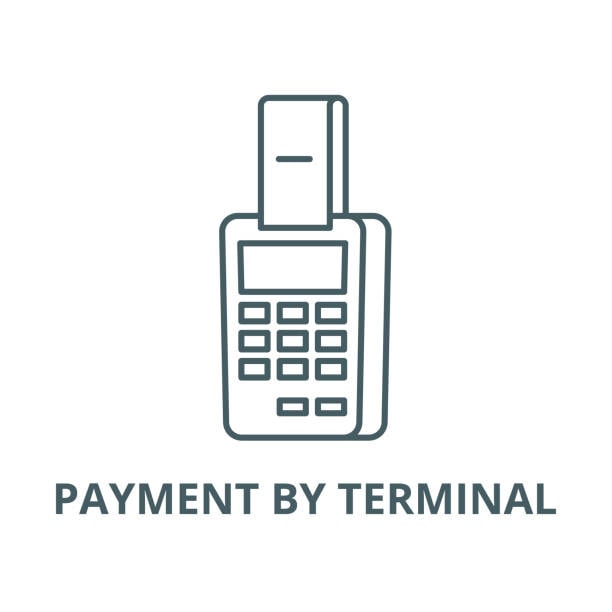
Asian ports especially Chinese ports usually have competitive rates of terminal handling fees because they have large cargo and efficient handling of the terminal. Automation of handling and port facilities has been a huge investment in major cities such as Shanghai, Shenzhen, and Ningbo cities; thus being able to process containers at low costs per unit. Nevertheless, certain fee tariffs from pacific international lines may differ considerably between terminals in any one port and there may be extra special services charges depending upon the needs of the cargo and contractual arrangements with the shipping line.

Terminal handling fee at European ports is, as a rule, more expensive than in Asian ports due to higher labor cost, strict environmental standards, and sophisticated requirements. Northern European ports like Rotterdam, Hamburg, and Antwerp, give high quality facilities and services at high freight rates set by the terminal operator . The ports in the Mediterranean might have competitive rates without sacrificing the quality of services. The ongoing Brexit and other political processes in the regions are having an impact on electrical connections the destination thc fee structure and operation process in Europe terminals.
Impact on Shipping Costs and Budgeting
The terminal handling fee components are usually 5-15 percent of the total costs of ocean freight and thus forms a major part of a shipment budgets. To companies that are handling several shipments or making frequent shipments, these freight charges can be raised to large sums, which interfere with profitability. To do accurate budgeting, all the local charges base terminal handling fees are not the only figure necessary to have an idea on. Our potential additional charges need to have an idea on it as well should there be special cargo need, or works delays, the additional charges that can be charged shall be understood.
Fee payment timing and obligations have implications in cash flow management by importers and exporters. Certain payments are due to be paid at origin and others will be due at destination giving rise to various financial liabilities in the process of shipping. When the fees are denominated in a different currency to that which the container carrier business operates then business needs to take into consideration the risks involved in currency exchange. Forward planning and facilities functioning cost estimation prevents the company to offer low prices to their customers and at the same time having enough margin to incur all costs involved in the logistics.
How Terminal Handling Fees are Calculated
Computations usually involve some standard amount of fee and variable ones depending on the specifications of containers and services required by the user of the terminal. Standard containers sizes and types have base rates and special equipment or non-standard size container dimensions have multipliers. The calculations might be done based on weight on the case of heavy cargo, volume-based storage, and handling needs at different ports . Tiered pricing systems may be adopted at certain terminals so that those doing high volume or signing long-term contracts receive lower rates.
Calculation methodology differences between terminals and shipping lines differ very sharply, with some having prices quoted on published rate sheets, and others negotiated on commitment of volumes and service needs. The budget may include terminal charges fuel surcharges, security (including insurance), and even regulatory compliance separately or as part of the terminal handling base given fee. Getting familiar with the calculation algorithm of your operating terminals and shipping lines will make it possible to predict the cost and manage budget better.
Negotiating Terminal Handling Fees
Volumes of negotiations constitute the best method of minimizing the cost of terminal handling fees since terminals and shipping companies will give you favorable rates when engaged in regular and high-trade volumes. Negotiations with vessel operators on annual contracts and trans shipment thc minimum guaranteed volumes might be able to obtain attractive prices and prevent price increment during the contract period. Close relationships (long term relationship) with freight forwarders who have secured good rates with various terminals may offer access to rates that are better than what individual shippers may obtain on their own.
Undertaking negotiations that include service level agreements and performance guarantees can be adopted to achieve value of money and efficiency in operations. The degree of desired temperature flexibility in the time selected and readiness to accept off-peak time slots can lead to lower rates as the terminals are interested in maximizing the capacity utilization. Negotiating positions may be enhanced by bundling of service, agreement to exclusively use certain container terminal services within a port, and preferential pricing structures may hinge on these bundling or commitments.
Terminal Handling Fee vs Other Port Charges
Terminal handling charges differ with port dues, port dues are fees charged by port authorities on the utilisation of port infrastructure facilities. Whereas, port dues are concerned with the entry of the vessels, berthage and port services, whereas, THF deals with particular container handling. By knowing this difference, the shippers can learn where to find the origin of many of the charges, as well as cope better with billing controversies. Certain charges can be joined or aggregated and one should give attention to the invoices to have proper analysis to be precise.
The documentation fees, customs clearance fees and inspection fees are distinct from the terminal handling fees, although these latter may be charged by the same collection agent and consolidated on the same invoice. Some of the ports include a security fee in the THF which is required according to the international requirements and others do not. Storage fees in warehouses after the gratis storage period are generally extra costs not included in basic terminal handling charges, although terminals provide extended free time as an option included in premium service programmes.
Best Practices for Managing Terminal Handling Costs
The extensive tracking of costs would allow companies to track the tendencies of terminal handling fees and discover the basis of optimization. The pattern analysis of ship and terminal performances on regular basis assists in decision making regarding routing options and/or selection of service providers. Having a set of records with all information about all charges in them from different terminals and comparing it with agreed rates will mean that billing is accurate and case of discrepancy can be pointed out and corrected.
Having variety in terminal and shipping lines would also offer the alternative to answer changes in rates and problems in services while sustaining competitive charges in logistics. Establishing good connections with various service providers opens the way to having a good rate and getting fast services at times where the company needs them. Being aware of the trends in the industry, amendments, and changes in regulation, as well as updated offers of services, will enable the business to adjust their plans regarding logistics to retain low prices and effective work.
Future Trends in Terminal Handling Pricing
Future development of automation and technological reform in terminal operations are likely to affect the pricing of the terminal handling fees in the future. The automated containers handling system, optimization of logistics through artificial intelligence, and digital documentation may increase the efficiency of the operations and, perhaps, decrease the prices in the long term. Nevertheless, due to the big capital investments needed in these technologies, the implementation cost might be initially recovered through increase in fees.
Terminal operations and pricing are becoming increasingly subject to environmental regulations and sustainability projects. Green technology investments, emissions reduction demands, and carbon pricing instruments may be appropriate in the computation of terminal handling fees at trans shipment ports in the future, influencing the overall shipping process terminal handling charge. By investing in renewable energy systems, electric features, and environmental management systems, ports are capable of providing competitive advantages because they might charge higher prices based on superior sustainability bona fides same port
.
Common Disputes and Resolution Strategies
Billing disagreements can usually occur due to the inability to see the list of services comprised in terminal handling fees and other fees. Proper documentation of service contracts and frequent communication with operators of terminals will avoid disputes and quickly resolve them in case of a dispute. Retention of the copies of all the relevant contracts, rate check, and service confirmation helps a great deal in dispute handling procedures terminal handling charges thc.
Shipping lines and terminal operators should have established the escalation procedures that will deal with disputes in a productive manner without interfering with current operations freight terminal. The complex disputes which cannot be settled directly between the parties are usually addressed in industry associations and trade organizations which usually offer services of mediation. The legal backgrounds of the jurisdictions regarding terminal operation can assist the strategies of dispute resolution and eliminate the rise of conflict at the time.
Technology and Digitalization Impact
Online booking systems, and digital systems are changing the way terminal handling fees are computed, notified, and retrieved. The pricing becomes transparent in real time via the digital platform and this will assist importers and exporters to make better choices of comparison and decision-making. Automated billing systems minimize records management errors and give minute details of costs, which leads to a better view of costs and budgetary control port terminal.
Blockchain and smart documentation systems would simplify the work of terminals and minimize the administrative expenses related to terminal handlings fees china shipping container lines. Automated payment or smart contracts might allow more dynamic pricing schemes and minimize the cost of undertaking transactions. Better communication and elimination of delays that might attract extra costs is achieved through integration of terminal operating systems and shipper platforms.
Kesimpulan
One of the crucial elements of international shipping cost that will be of significant importance to deal with very carefully is terminal handling fees. Knowledge on how to calculate terminal handling charges and the different factors affecting the different charges involved, such as the nature of a container, regional aspects, among others, can help companies make wiser decision makings on their logistics activities. Good negotiation tactics coupled with great cost monitoring and performance assessment methods can work to streamline the cost of terminal handling without compromising on the quality of the service port technicians.
The changing environment of terminal operations due to the influence of technological improvement and change in regulation raises challenges as well as the opportunity in managing the terminal handling costs pays terminal handling charges. Companies who are aware of the current trends in the industry and keep their logistics solutions flexible enough will be best equipped to deal with shifting fee structures and business needs as well as to retain competitive advantage in the global market.


Thank you for reading!
Have questions, corrections, or better ideas? We’d love to hear from you!
We value every piece of feedback and promise to reply within 24 hours. Let's make this guide better together!
Note: Spam comments will not be published.